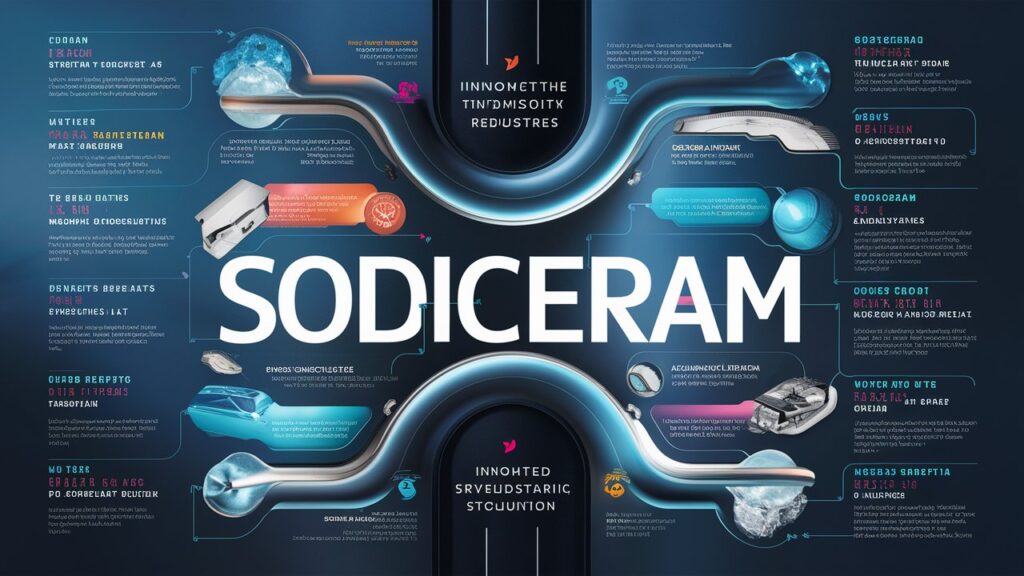In the ever-evolving world of advanced materials, Sodiceram has emerged as a revolutionary substance with diverse industrial applications. From construction to high-performance ceramics, this material offers unmatched durability, thermal resistance, and sustainability compared to conventional alternatives. But what exactly is Sodiceram, and why is it gaining rapid popularity? This article delves deep into its composition, benefits, key applications, and future potential, providing a comprehensive guide for engineers, architects, and industry professionals.
What is Sodiceram?
Sodiceram is an advanced ceramic material primarily composed of sodium-based compounds, engineered for superior strength, heat resistance, and chemical stability. Unlike traditional ceramics, which may crack under extreme conditions, Sodiceram maintains structural integrity even in high-stress environments. Its unique molecular structure allows for enhanced performance in industries ranging from aerospace to civil engineering.
Key Benefits of Sodiceram
One of the most compelling advantages of Sodiceram is its exceptional thermal resistance, making it ideal for furnaces, kilns, and high-temperature industrial processes. Additionally, its low thermal expansion coefficient ensures minimal warping or degradation over time, reducing maintenance costs. Another key benefit is its chemical inertness, meaning it does not react with acids, alkalis, or corrosive substances, making it perfect for chemical manufacturing plants.
From an environmental perspective, Sodiceram is eco-friendly, as it can be manufactured using sustainable methods and recycled materials. This positions it as a leading choice for green construction projects aiming for LEED certification. Moreover, its lightweight yet durable nature allows for easier transportation and installation without compromising structural integrity.
Industrial Applications of Sodiceram
The versatility of Sodiceram has led to its adoption across multiple industries. In construction, it is used for fireproof panels, insulation materials, and high-strength flooring solutions. The automotive and aerospace sectors utilize it for heat shields and engine components due to its ability to withstand extreme temperatures.
In ceramic manufacturing, Sodiceram serves as a superior alternative to traditional clay-based products, offering better resistance to wear and tear. The energy sector also benefits from its application in thermal power plants and nuclear reactors, where material stability is critical.
Sodiceram vs. Traditional Materials
When compared to conventional ceramics or metals, Sodiceram outperforms in several aspects. Traditional materials like steel or alumina ceramics may degrade under prolonged exposure to heat or corrosive substances, whereas Sodiceram retains its properties over extended periods. Its longevity and reduced replacement frequency translate into cost savings for industries.
Additionally, while materials like concrete or brick are heavy and require significant structural support, Sodiceram’s lightweight nature allows for innovative architectural designs without compromising safety.
Conclusion
Sodiceram represents a significant leap forward in material science, offering durability, sustainability, and versatility unmatched by traditional alternatives. As industries continue to seek high-performance solutions, Sodiceram is poised to become a cornerstone of modern engineering and construction. Whether for thermal applications, chemical resistance, or eco-friendly building projects, this advanced ceramic is setting new standards for efficiency and reliability.
FAQ Section
1. What is Sodiceram made of?
Sodiceram is primarily composed of sodium-based ceramic compounds, engineered for high thermal and chemical resistance.
2. Where is Sodiceram commonly used?
It is widely used in construction, aerospace, automotive, and industrial manufacturing due to its durability and heat resistance.
3. Is Sodiceram environmentally friendly?
Yes, it can be produced using sustainable methods and recycled materials, making it a green alternative.
4. How does Sodiceram compare to traditional ceramics?
It offers better thermal stability, chemical resistance, and longevity compared to conventional ceramics.
5. Can Sodiceram be used in residential buildings?
Absolutely! Its fireproof and insulating properties make it ideal for modern sustainable housing.

